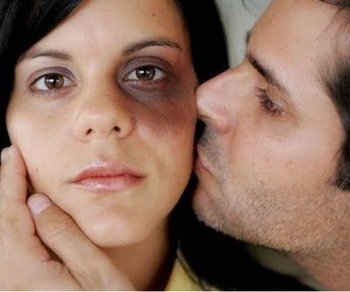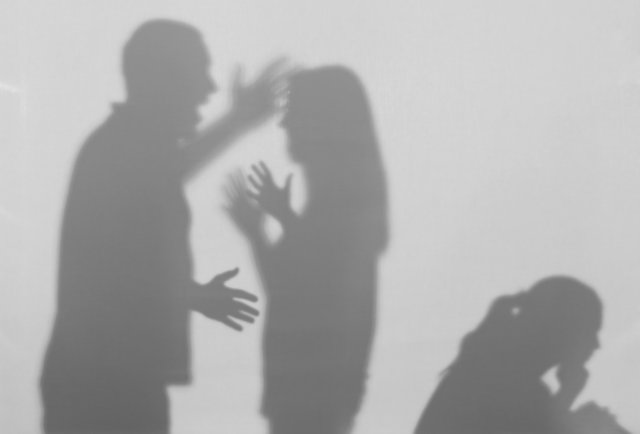Domestic Violence

For other uses of this term, see Domestic violence (disambiguation).
For Violence against women because of their sex, see Violence against women.
Domestic violence or intrafamily violence is a concept used to refer to "the violence exerted in the field of family coexistence or assimilated, by one of the members against another, against some of the others or against all of them". all those violent acts, from the use of physical force, to harassment, harassment, or intimidation, which occur in a household, and perpetrated by at least one member of the family against another family member.
The term includes a wide variety of phenomena, including some components of violence against women, violence against men, child abuse, filio-parental violence and abuse of the elderly.
Types of domestic violence.
Usually this type of violence does not occur in isolation, but follows a constant pattern over time. The main passive subjects are women, children and dependents. What all forms of family violence have in common is that they constitute an abuse of power and trust. Given the complexity and variety of the phenomenon, it is very difficult to know its global dimensions.
Psychological violence
See also: Psychological harassment.
Psychological violence, also known as emotional violence, is a form of abuse, which is why it is one of the categories within domestic violence. The intention that brings psychological violence is to humiliate, make feel bad and insecure to an individual, deteriorating their own value. It differs from physical abuse because it is subtle and much harder to perceive or detect. It manifests itself through hurtful words, humiliations, shouts and insults. This disorder can be based on the childhood of people when the lack of attention on the part of parents or family members and intrafamily violence takes place.
Violence against women in the couple.
See also: Violence against women
The idea of the submission of women as the best way to ensure peace within marriage is still rooted among us.
Violence against women by their partner or ex-partner is widespread in the world, occurring in all social groups regardless of their economic, cultural or any other consideration. Even though it is difficult to quantify, since not all cases transcend beyond the scope of the couple, it is assumed that a large number of women suffer or have suffered this type of violence. Studies conducted in developing countries show a figure of abuse around 20%, with the lowest rates in countries of Europe, the United States, Canada, Australia and Japan with figures around 3%.
Most victims conceal the existence of these problems for fear of being judged in society. Indecision is one of the reasons for not admitting the situation as well as the dominant stereotype of femininity in the West, where the exercise of active violence is not considered as an attribute of women.
Also enters the aspect of education and social environment that is lived from children, a man who is abused psychically or physically by his partner, is attributed to be a "weak" man, or is assaulted by his friends or colleagues work and that is precisely why he is not willing to denounce, let alone seek help. This is a direct consequence of machismo, since women are socially considered weak and therefore incapable of mistreating men.
Depression is one of the consequences of domestic violence. Women who suffer domestic violence are at increased risk of stress and anxiety disorder, particularly the disorders resulting from post-traumatic stress. The suicide attempt and depression are closely connected partner violence. Violence against women prevents them from participating fully in their communities in economic and social terms. Women in violence are less likely to have a job.
In the couple, the abuse against women has specific causes: the man's attempts to dominate the woman, the low esteem that certain men have of the women; causes that seek to establish a relationship of dominance through scorn, threats and blows.
Men who mistreat their partner are motivated by a need to dominate and control their partner. In a review of multiple works, the main results indicate that aggressors often present psychological alterations such as lack of control over anger, difficulties in expressing emotions, deficits in communication skills and problem solving, and low self-esteem. Types of violent men - aggressors limited to the family, aggressors with borderline / dysphoric characteristics and violent aggressors in general / antisocial - that require treatment programs, adapted to their characteristics and specific needs ".
The most visible features of abuse are beatings and murders, which transcend the couple's scope; However, low-level abuse, psychic abuse that, over time, undermine the woman's self-esteem, are the ones that occur most often.When it transcends a case of abuse, the woman may have suffered for years. And if the abuse can occur at any stage of the couple's history, it is at the moment of the rupture and after this, if it occurs, when they become exacerbated.
That is why, in the search to prevent violence, it is about giving tools to adolescents to identify the typical characteristics of violent people and to be aware of that low intensity violence that usually begins before marriage, during courtship. This is how the concept of dating violence was born.
It is common to treat the issue of abuse as individual cases. The aggressors would suffer a series of disorders that would lead them to mistreat the woman and, in her fragility, to receive them. This would be a vision of the reassuring problem that would not call into question the patriarchal model.
The psychopathological model explains violence as a result of deviant behavior characteristic of certain individuals whose personal history is characterized by a serious disturbance. This approach, after all reassuring, speaks of an "other", a "sick" or "delinquent", who, after examining it, can be punished or treated medically.
From the feminist point of view, male violence is perceived as a mechanism of social control that maintains the subordination of women to men. Violence against women derives from a social system whose values and representations assign women the status of a dominated subject.
The ultimate consequences of violence against women in the couple are that of dozens or hundreds of women killed each year, in different countries, by their partners or ex-partners. And in many cases, this violence at the hands of their partners or ex-partners against the woman who is a mother in addition to the post-traumatic stress that can continue to produce very negative effects for the psychological development of children in the home.
The consequences of these (and any other type of abuse) are that the woman's self-esteem diminishes and affects emotional development. In most cases, the a can seek a solution in drugs and alcohol, even in crime. In addition, if there is no advance or previous solution in women, they usually enter into relationships in which this pattern of abuse is repeated, falling into a vicious circle. Low self-esteem is strongly reflected in the school or work environment; The woman has identity problems and a lot of difficulty regarding the management of aggressiveness, it is difficult to build emotional relationships due to distrust of other people.
Violence against women acquires special relevance, severity and consequences when suffering during pregnancy. If there is still more seriousness in a scale of abuse, the pregnant adolescent (minor) should be considered subjected to abuse and mistreatment. The personal suffering and the complications of pregnancy are extremely serious and have an impact on both the mother and the product of pregnancy. The WHO Study focused mainly on violence against women inflicted by their partner. Such violence includes physical, sexual and psychological violence and dominant behaviors on the part of current or former partners, and includes both the current situation of the women interviewed and their previous experiences. This report focuses, fundamentally, on the experiences of physical and sexual violence reported by women, in particular when evaluating the link of such violence with the repercussions for health, due to the difficulty of coherently quantifying psychic abuse in different cultures.
The results indicate that the violence inflicted by the couple (also called "domestic violence") is widespread in all the countries where the Study was conducted. However, there were numerous variations between countries and between environments within the same country. Although differences were observed according to age, marital status and educational level, these sociodemographic factors did not explain the divergences that were found between the different environments.
The percentage of women who had ever had a partner and who had suffered physical or sexual violence, or both, from their partner throughout their lives ranged between 15% and 71%, although in most environments Indexes between 24% and 53% were recorded. Japanese women were those who had experienced less physical or sexual violence, or both, inflicted by their partner, while the highest number of violent experiences were registered in provincial environments (mainly rural) in Bangladesh, Ethiopia, Peru and the Republic. United of Tanzania However, even in Japan, about 15% of women who had ever had a partner reported having been subjected to physical or sexual violence, or both, at some point in their lives. In the last year, the percentages of women who had been victims of violence at the hands of their partner ranged between 4% in Japan and in Serbia and Montenegro
Violence against men in the couple.
See also: Domestic violence against men.
Domestic violence against men - in the context of domestic violence - refers to those violent actions where the role of aggressor is taken by women in heterosexual couples or, by the male in those couples of a homosexual nature. As in domestic violence against women, violence against men can be a crime, but there is great variation between the laws of different jurisdictions. Despite numerous studies that report on the prevalence of domestic violence perpetrated by men against women, other studies suggest that the rates of domestic violence for women and men are equivalent, which has generated many controversies and discussions among researchers.
Some authors indicate that similar motives can be found in both domestic violence against women and in that which is carried out against men, while the idea that men can be victims of women generates resistance and is not exempt from controversies. , which deals, for example, with the bias when understanding the idea of physical violence as the only really important form of violence.
While women who experience domestic violence are openly encouraged to report it to the authorities, it has been argued that men who experience such violence often encounter pressures contrary to their complaint, and that those who do face social stigma, in terms of the perception of lack of manhood and other issues that denigrate their masculinity.




